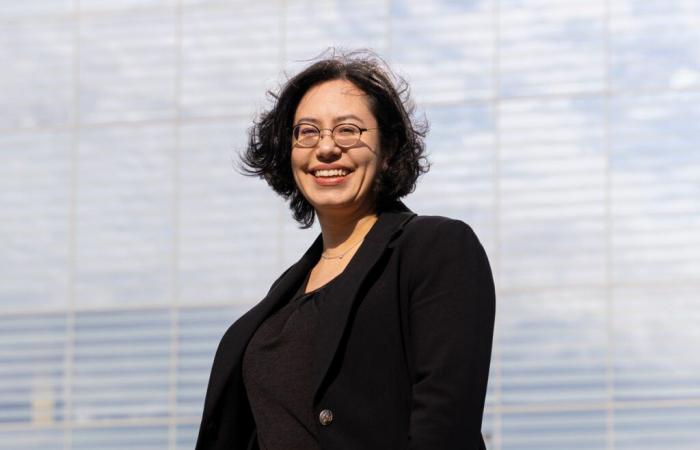Supermassive black holes are very curious celestial objects. As their name suggests, their mass is around a million times that of the Sun. However, they are also very, very compressed, which makes their gravitational field extremely powerful, to the point that nothing can escape, not even light. Result: the most massive black holes are tiny in size compared to the galaxies at the center of which they are located, such as the Milky Way, but on which they nevertheless exert an enormous influence. But then, why do they have the superpower to reshape these large structures of billions of stars? Imagine: it’s as if an object the size of a coffee cup could shape the face of the Earth!
Professor in the Department of Physics at the University of Montreal Julie Hlavacek-Larrondo has been seeking to answer this question for more than 15 years. His work demonstrates in particular that supermassive black holes act as the beating heart of galaxies. “They ensure the circulation of gas and matter, nutrients which keep the galaxies hot, which has the effect of regulating the formation of stars”, summarizes the one who received the first Rising Star prize from the Research Fund of the Quebec – Nature and technologies sector, last May. The researcher was also awarded the Herzberg Medal from the Canadian Association of Physicists earlier this year.
Artificial intelligence to the rescue
The holder of the Canada Research Chair in Observational Astrophysics of Black Holes specializes in the study of the largest supermassive black holes in the cosmos. We find the latter at the center of the largest and oldest galaxies in the Universe, which also have the particularity of being themselves at the center of clusters of thousands of smaller galaxies. “These clusters act as gravity wells where gases fall, which are then heated to 10 million degrees Celsius. This phenomenon [indicateur de la présence de trous noirs supermassifs] emits X-rays that space telescopes like Chandra can detect,” explains Julie Hlavacek-Larrondo.
Decoding this energy signature, however, requires considerable resources. Each image captured in the sky has millions of pixels. Processing just one to extract all the relevant information therefore takes weeks. A pace that is impossible to follow when photos are taken every day… The advent of artificial intelligence is fortunately changing the situation. “Machine learning tools now provide us with answers in just a few minutes,” says the astrophysicist. When you think about it, astronomy is one of the areas where big data has always been present. »
Artificial intelligence also makes it possible to circumvent the limitations inherent in measuring instruments. “Through a mathematical operation of incredible complexity, the algorithms are capable of converting the data received which has been previously modified by the telescopes into “real” light,” she says. These advances open up previously unsuspected avenues of research. “My team has access to the first data from the X-ray space telescope XRISMlaunched in 2023. We believe, thanks to these new techniques, we will increase the sharpness of the captured images and thus see structures that would otherwise have gone unnoticed before our eyes. »
Scientific identity
Julie Hlavacek-Larrondo is a world authority, as evidenced by her numerous awards and scholarships received over the years, her publications in prestigious journals, her time working on the largest telescopes in the world, etc. Despite everything, in a field where men are overrepresented, his profile stands out. “Being a woman in pure sciences never really bothered me, until the day I realized that even identical application files are evaluated very differently depending on the sex of their author,” says the woman who then committed to overturning this status quo.
This led her to co-found Parité sciences, which aims to change stereotypical representations of science among students and thus encourage scientific vocations among them by relying on teaching staff. “Thanks to this bold initiative, we have trained more than 1,000 members of the college teaching community in Quebec since 2020,” rejoices Jean-François Arguin, co-founder of Parité sciences and also professor in the Department of Physics at the University of Montreal. “Julie embraced the cause of equity, diversity and inclusion long before it was fashionable. We can say that she is a true visionary. »






